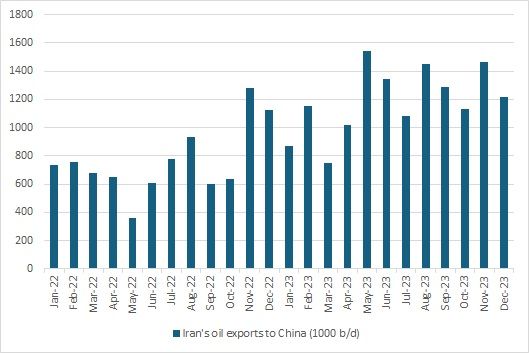Iran Faces Trade Imbalance as Major Partners Reduce Imports

Iran's foreign non-oil trade has shown significant imbalances in 2023, with major trading partners reducing their imports of Iranian goods, according to a variety of economic data.

Iran's foreign non-oil trade has shown significant imbalances in 2023, with major trading partners reducing their imports of Iranian goods, according to a variety of economic data.
According to Iran's Customs statistics, the country's non-oil exports have declined by 10.7 percent year-on-year, reaching $40.47 billion during the first ten months of the current fiscal year, which began on March 21, 2023. In contrast, imports have increased by 12 percent to $54.4 billion, resulting in a non-oil trade imbalance of about $14 billion.
With Iranian oil exports sanctioned by the United States since 2018, and far less than their 2017 level, non-oil products play a larger role in securing much-needed foreign currency revenues for the country.
China, the UAE, Iraq, Turkey, and India are Iran's primary trade partners. Except for the UAE, which primarily re-exports Iranian goods, the remaining four partners have significantly reduced their imports of Iranian goods in 2023. China, for example, decreased its imports of Iranian non-oil products by 28 percent to $4.58 billion, while its exports to Iran increased by 8.6 percent to over $10 billion, according to China's Customs statistics.
China hasn’t taken any direct Iranian oil since 2020 and doesn’t acknowledge any Iranian oil imports in its Customs’ statistics. But according to Kpler’s data, seen by Iran International, Chinese independent small refineries, called teapots, imported about 1.2 million barrels per day of Iran’s crude oil and gas condensate, re-branded mostly as Malaysian oil.

Turkey's Statistics Center also reported a 33 percent decline in imports from Iran, largely due to a reduction in natural gas imports. Turkey has drastically reduced its Iranian gas imports since July 2023, with average daily imports declining by 67 percent year-on-year to 10 million cubic meters.
India's official statistics also show a 7 percent decline in imports from Iran, while Iraq and the UAE have not published any statistics. However, according to Iran's Customs data, exports to Iraq decreased by 14 percent to $7.7 billion, while exports to the UAE increased by 8 percent to $5.2 billion.
Iran's Custom statistics reveal that the country exported $29.9 billion worth of crude oil, gas condensate, and mazut during the first ten months of the current Iranian fiscal year. Despite efforts to bypass US sanctions, including offering heavy discounts to Chinese refineries, Iran's oil revenues fell short, with an estimated $6 billion wasted.
Additionally, Iran's service exports amounted to $780 million during this period, significantly lower than previous years, where it reached around $4 billion annually. Iran typically experiences a negative balance in its trade services, amounting to approximately $7 billion.
In total, Iran's non-oil, and service trade balance appeared to be positive at $10 billion during the mentioned period. However, the country also faces significant capital flight, with the Central Bank reporting a negative net capital account of $15 billion for the previous Iranian year, indicating a substantial outflow of foreign currencies from the country.